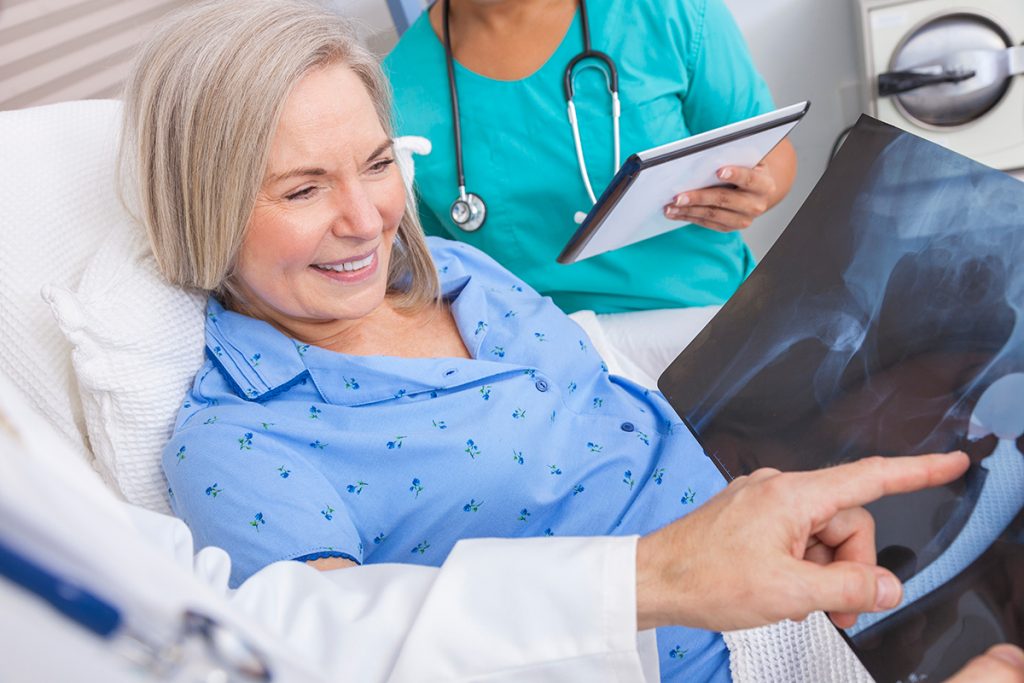The Role of the SAID Principle in Joint Replacement Fitness
The SAID Principle, Specific Adaptation to Imposed Demand, is a fundamental law of human physiology. The classic definition of this principle is “the body adapts to what it does”. A more precise, neuro-centric definition would be “the body ALWAYS adapts to EXACTLY what it does”. The takeaway is this: if you want a certain result, you must train with precision.

Joint replacements are an incredible medical innovation, but they are also incredibly traumatic events to the dermal, fascial, musculoskeletal, and nervous systems. Of specific concern for joint replacement clients are the mechanoreceptors that provide input to the brain about the joint and surrounding area through touch, pressure, stretch (skin and muscles/tendons), temperature, vibration, and movement.
Some studies have shown, depending on the type of replacement performed, joint capsule mechanoreceptors are no longer present and do not regenerate. The injuries to tissues or joints, whether acute or chronic, can result in dysfunctional proprioceptive feedback, and that is not automatically regained after joint replacement. So, we will need to train with precision to maximize and improve proprioceptive input and joint position sense.
Building variety into fitness training for joint replacement clients
Training with precision means taking our fitness training beyond “strengthening and stretching”. Our joint replacement clients likely got plenty of that during their physical therapy anyway. Another way to think about the SAID Principle is “use it or lose it”. If we want our joint replacement fitness clients to get the most out of their replacement, we need to program a variety of aspects:
- Motor Control Drills for individual joints (the replaced joint as well as supporting joints) take the targeted joint through full, active, pain-free range of motion. It can be startling how many folks have poor motor control and joint position sense over some joints when asked to focus movement at only one joint.
- Open & Closed Chain movements around the affected joint are both important and should be included. Barbells are great, but most human movement (walking, running, reaching, throwing, etc.) is open chain, so we need to train it!
- Loading variations such as isometrics, free weights, and resistance bands require different firing patterns and levels of motor control. Isometrics specifically are a vastly underutilized form of strength training that is very “low threat” neurologically, allowing muscular force production in a very safe manner.
- Speed of Movement variety can also improve motor control. Going through a movement in slow motion, or to the beat of a metronome, can be incredibly challenging but beneficial.
- Multi-Planar / Multi-Directional Movements are one of the most important variations to implement with joint replacement clients to build a large and detailed proprioceptive map of the new joint and surrounding musculature.
Programming for this type of variety is very important for joint replacement clients but also for general fitness, performance, and pain clients! Begin learning a neuro-centric approach to medical fitness and how to work with joint replacement clients with our Joint Replacement Fitness Specialist online course, available through the MedFit Classroom!
Pat Marques is a Z-Health Master Trainer and NSCA-CPT specializing in training the nervous system to improve performance and get out of pain. After retiring from the Active Duty Army, Pat pursued his education and certifications in exercise science, initially working with wounded, ill, and injured soldiers. During this time that Pat discovered the power of using a neurological approach to training to get out of pain and improve fitness and performance. He currently provides exercise therapy, movement reeducation, and strength and conditioning for all levels of clients at NeuroAthlete, from chronic pain sufferers to Olympic-level and professional athletes.
References
- Cobb, E. (2020). R-Phase Certification Manual and Presentation. Z-Health Performance Solutions.
- Soulat, N., Alistair, P., and Gey, V. (2014). Assessing Regeneration of Mechanoreceptors in Human Hip Pseudocapsule After Primary Total Hip Arthroplasty. Journal of Orthopedics, Trauma and Rehabilitation (18)
- Domoslavska, D. (2011). Restoring proprioception after sports injuries and pathological states of the shoulder complex. Journal of Combat Sports and Martial Arts (Vol. 2).


